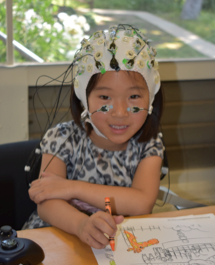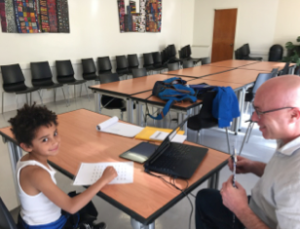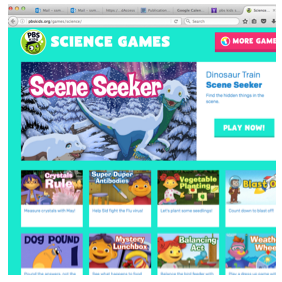Principal Investigator: Dr. Jennie Grammer
Graduate School of Education & Information Studies
grammer@g.ucla.edu
Participants: Rooms 3, 11,12,14 15 & 16 – Students ages 4-8
Keywords: Self Regulation, Executive function, motivation process

Educators and researchers have become increasingly interested in the role that self-regulation, executive function, and motivational processes play in children’s success in school. However, these constructs are rarely examined together, and relatively little is known about relations between them in early elementary school. Bringing together developmental, educational, and neuroscientific perspectives, the goal of this investigation is to understand the neurocognitive mechanisms that contribute to children’s self-regulation and persistence in school. Specifically, the project seeks to examine children’s attentional focus and persistence on tasks they find challenging by exploring the neural markers of response monitoring using Electroencephalography (EEG). In doing so, the hope is to explore the brain and behavioral processes that children engage in during challenging tasks and the effects on their academic skills.
Principal Investigator: Howard Alpert

Decoding is a basic part of reading. It is turning written words into spoken words. This project will clarify the distinct roles of phonemic awareness, executive function, and rapid automatized naming in relation to decoding. Past research established phonemic awareness-—using language sounds in rhymes and such—as central to decoding. Rapid automatized naming—the rate of naming printed letters, colors, etc.—also appears to play a role in decoding. Recent research suggests executive function—a broad term that, here, refers to keeping track of choices, inhibiting actions, and switching attention between attributes—as another possible factor. Executive function research has been limited because children’s executive function is difficult to measure. This study uses an innovative, game-like instrument to measure executive function. Distinguishing the roles of phonemic awareness,
Decoding is a basic part of reading. It is turning written words into spoken words. This project will clarify the distinct roles of phonemic awareness, executive function, and rapid automatized naming in relation to decoding. Past research established phonemic awareness-—using language sounds in rhymes and such—as central to decoding. Rapid automatized naming—the rate of naming printed letters, colors, etc.—also appears to play a role in decoding. Recent research suggests executive function—a broad term that, here, refers to keeping track of choices, inhibiting actions, and switching attention between attributes—as another possible factor. Executive function research has been limited because children’s executive function is difficult to measure. This study uses an innovative, game-like instrument to measure executive function. Distinguishing the roles of phonemic awareness.
Principal Investigator: Greg Chung
Graduate School of Education & Information Studies (CRESST) chung@cresst.org
Participants: Rooms 3, 11 & 12 – Students ages 6-8
Keywords: gameplay meaures for Inquiry, Engagement, Affect, Content Knowledge

While many educational games strive to adapt for an optimal gaming and learning experience, there is relatively little research on creating algorithms for adaptivity This study seeks to understand the efficacy of algorithms embedded in educational science games that adapt the user experience according to the player’s actions and performance in order to deliver a superior learning experience. The study will also lead to the development of new algorithms based upon the observational data we collect in order to further the adaptive capabilities of the games. Participants will be observed playing science games (aligned with the Next Generation Science Standards), developed by PBS KIDS. Video data and clickstream data will be collected, and players will participate in 2 short interviews with researchers to understand their background knowledge of the science concepts, attitudes toward science, experience with digital games, and experience playing the games. Data will be analyzed qualitatively to understand the players’ experience of the game adaptivity, and new algorithms will be developed based upon observations of player behavior.
Principal Investigator: Randy Illum, CONNECT Fellowship Awardee 2016

This study will be comparing how collaboration between students, and how the students represent knowledge, changes when using traditional art-making methods, such as drawing with markers, when contrasted with digital body-based art making (painting on a digital canvas by moving one’s body through physical space). This aim of this research is to compare the ways in which young learners are able to collaborate and express concepts of space through a traditional method of art making, i.e. drawing with a marker, and through an emerging method of painting which allows a student to paint through their movement in space, enable by computational sensing. The purpose of the comparison between traditional methods of art making and body-based computational art making is to find if 1) students are able to create more meaningful and productive collaborations through body-based art making, or if the computational process hinders collaboration when compared to traditional methods; 2) if students are able to better express complex notion of a space through a body-based painting process when compared to traditional methods.



